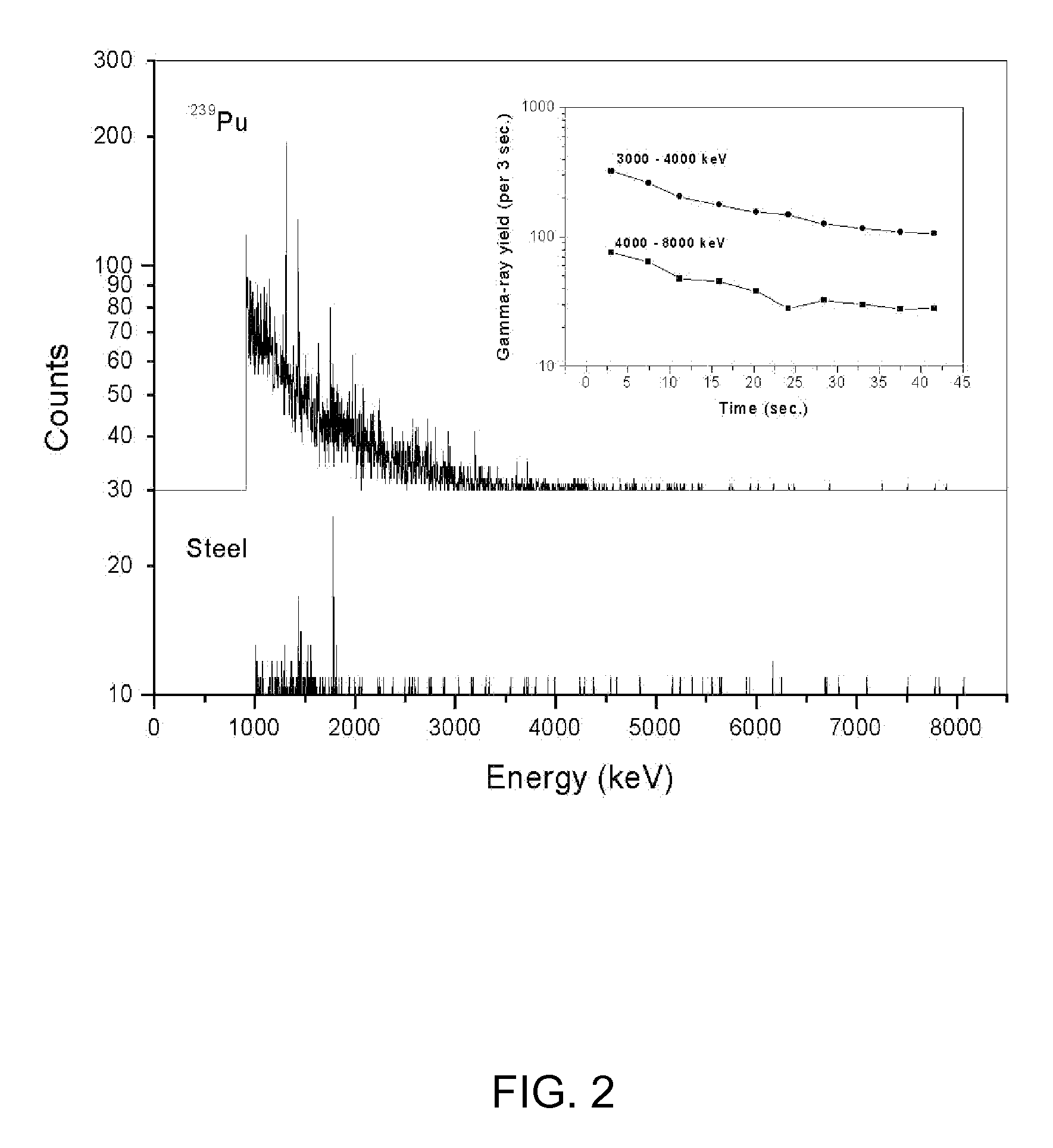Detecting special nuclear materials in suspect containers using high-energy gamma rays emitted by fission products
a nuclear material and suspect technology, applied in the field of special nuclear materials detection, can solve the problems of inapplicability or impracticality of many such cases, failure of methods, and low detection sensitivity, and achieve the effect of sufficient flux and energy level
- Summary
- Abstract
- Description
- Claims
- Application Information
AI Technical Summary
Benefits of technology
Problems solved by technology
Method used
Image
Examples
Embodiment Construction
[0016]The embodiments of the present invention are directed to methods and systems that use either neutrons or high-energy photons (e.g., gamma-rays) to irradiate a fully loaded cargo or other container. Such neutrons or gamma-rays have a sufficient flux and energy level to induce fission in any SNM inside the container. After the neutron or photon irradiation is completed, a detector, or an array or arrays of detectors are used to interrogate the container for high energy (e.g., above 3 MeV) gamma rays that are produced by radioactive decays of fission products.
[0017]The inventors herein have shown that the yields of high-energy gamma rays following the thermal neutron-induced fission of 235U and 239Pu are large enough to permit the detection of kilogram-sized quantities of SNM hidden inside of cargo or other containers. The inventors herein have also shown that the energy spectrum of gamma rays emitted by fission products is qualitatively different from that produced by other mate...
PUM
| Property | Measurement | Unit |
|---|---|---|
| energy | aaaaa | aaaaa |
| energy | aaaaa | aaaaa |
| energy | aaaaa | aaaaa |
Abstract
Description
Claims
Application Information
 Login to View More
Login to View More - Generate Ideas
- Intellectual Property
- Life Sciences
- Materials
- Tech Scout
- Unparalleled Data Quality
- Higher Quality Content
- 60% Fewer Hallucinations
Browse by: Latest US Patents, China's latest patents, Technical Efficacy Thesaurus, Application Domain, Technology Topic, Popular Technical Reports.
© 2025 PatSnap. All rights reserved.Legal|Privacy policy|Modern Slavery Act Transparency Statement|Sitemap|About US| Contact US: help@patsnap.com



